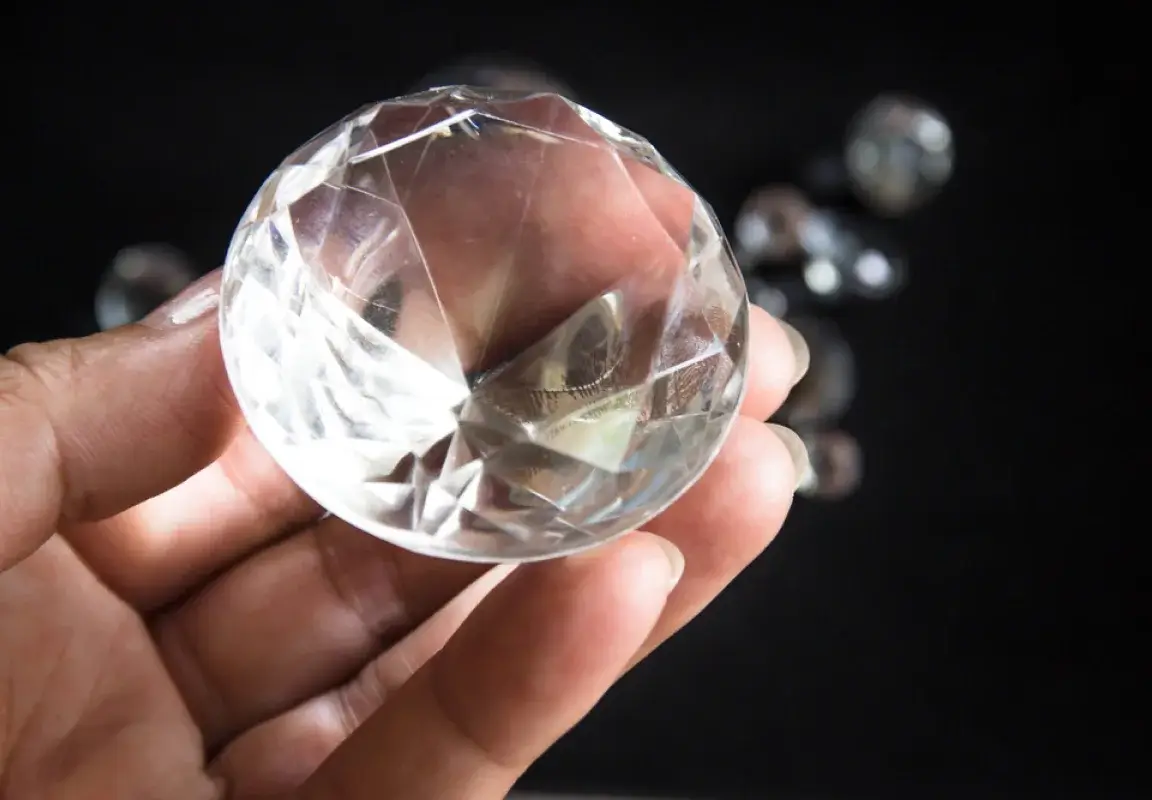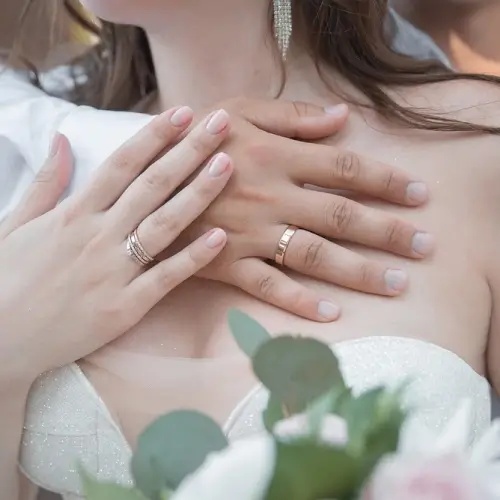Diamonds, as they say, are forever. The clarity/ cut/ fire/ brilliance; these are just some of a diamond's features that make it unique. But in a world where gemstones are a million, how do you tell the difference between real diamonds and fake diamonds? In this blog, we will help you in understanding the difference between real diamonds and fake diamonds and also tell you how to recognize those differences.
TABLE OF CONTENT
What Are Real Diamonds?
To understand what a real diamond is, we must understand its composition. A diamond's chemical composition and crystal structure are rather unique, making it a rare and precious gemstone. It is the only gemstone created by just a single element; carbon. It consists of about 99.95 percent carbon, and the other 0.05 percent contains one or more trace elements. The trace elements are atoms that are not considered a part of the gemstone's chief composition. The trace elements do, however, influence the crystal shape and color of the gem. A mined or natural diamond is a real diamond as it consists of carbon that has been hardened into a solid composite due to underground pressure and temperature. Its creation takes about 1 billion to 3.5 billion years to be naturally created before being extracted from a mine.

What Are Lab Diamonds?
Lab grown diamonds are a sustainable and eco-friendly diamond alternative to mined stones. They are considered real as they have the same physical, chemical composition, and optical properties as naturally mined stones. The only difference between the both is that lab diamonds are created in state-of-the-art laboratories where the natural diamond creation process is emulated to provide a sustainable and eco-friendly alternative.

EXPLORE LAB DIAMONDS
Real Diamonds Vs. Lab Created Diamonds
The only difference between natural and lab diamonds is that lab grown gems are artificially crafted or man-made in a laboratory. They both look the same, making it impossible to tell the difference. Even a qualified gemologist would require specialized tools to tell the difference. Both diamond types compose of carbon created in a way that nature designed it to be with only one minor difference; naturally found stones have a small amount of nitrogen while lab created synthetic diamonds do not. The US Federal Trade Commission, also known as the FTC, distinguishes lab diamonds as real diamonds because of the gem's carbon-based chemical form.

How to Know Whether Your Diamond Is Authentic?
Always request diamond certifications when purchasing your gemstone from an online jewelry store to confirm whether you have a real diamond or not. Grading authorities like GIA, IGI, and AGS, as well as independent inspectors in alliance with professional diamond grading associations, are some of the most acceptable and reliable sources to check whether your diamond is legit.
What Are Fake Diamonds?
Fake diamonds are gemstones that look like diamonds but have a completely different chemical composition. These fake diamonds are nothing but diamond imitations and are also called simulated diamonds.

How to Identify Real Diamonds Vs. Fake Diamonds?
There are a few simple tests or ways to establish the difference between real vs. fake diamonds. We advise you to consult an expert, your jeweler, and obtain a diamond certificate, as that is the best way to know your gemstone is authentic. Your jeweler also has professional equipment and diamond testers to authenticate your gemstone. Below are a few tests to determine whether your diamonds are real or not.
Sparkle Test
An at-home sparkle test inspects the stone's behavior in light. No alteration can be done to a diamond's natural refraction. Fake stones like cubic zirconia and other stones sparkle less with iridescent colors. A real diamond shall reflect light with grayish hues letting you know it's authentic.

Sandpaper Test
A sandpaper test is a simple test to recognize between a real and fake diamond. Rub the scratchy side of the sandpaper on the stone. If you are worried about scratches, the dust on the sandpaper usually has a hardness between 7 and 9 on the Mohs scale. A diamond rates 10 on the same scale. If scratches appear on the stone, you're holding a fake stone.
Read through Test
The read-through method is another home test and is exactly what it sounds like. Loose diamonds, unmounted from a setting or jewelry, can be tested using them to read through any text. If you can read through the gemstone, even being able to read the letters slightly blurred means you are holding a fake diamond. If holding a real diamond, you won't be able to read the letters as the stone's facets will refract light in various directions making it difficult to read the words on the paper.
Loupe Test
A loupe test is a test done by a diamond professional with a magnifying glass called a loupe. A loupe allows the professional to look for flaws and imperfections within the gemstone and hence differentiate between a real diamond vs. fake diamond.

Fog Test
A quick way to identify between a real diamond vs. a fake diamond is to see whether it fogs up. Synthetic stones cannot absorb heat, so breathing on a diamond allows you to get an idea of the difference between a real diamond vs. fake diamond. A real diamond will fog but clear up immediately; if the fog does not dissipate quickly, it is fake.
Stones That Are Actually Fake Diamonds
Cubic Zirconia
Cubic zirconia is a famous diamond substitute. This stone is created with zirconium dioxide and is a relatively hard stone that measures 8.0-8.5 on the Mohs scale; however, it is not as durable and hard as a real diamond that measures 10 on the Mohs scale. The cubic zirconia stone is an inexpensive option that blemishes easily, forgoing its charm after wearing it for a while.
White Sapphire
Sapphires often come in blue and a huge range of colors, including white, which looks transparent to the naked eye. White sapphires are often misunderstood as diamonds, yet they do not provide the diamond's sparkle or the contrast between dark and light areas. If the gem looks blurred and does not have that unique light and dark contrast, you can be almost certain that it is a white sapphire.

Moissanite
Moissanite or silicon carbide is an extremely rare mineral found in nature; therefore, it is frequently created synthetically in labs. Moissanite looks similar to diamonds but exudes more colorful sparkles when exposed to light. Due to its colorlessness and hardness, which stands as a 9.5 on the Mohs scale, this gem is considered an ideal substitute but is still a fake.

White Topaz
At first glance, the white topaz looks like a diamond. Yet there is a myriad of factors that distinguish it from a real diamond. The outer surface is much softer and can be blemished easily by other materials. When looking for eco-friendly and sustainable diamonds, choose Friendly Diamonds, a New York-based eco-friendly online jewelry brand providing a vast assortment of GIA and IGI-certified lab grown diamonds that are the real deal.




















